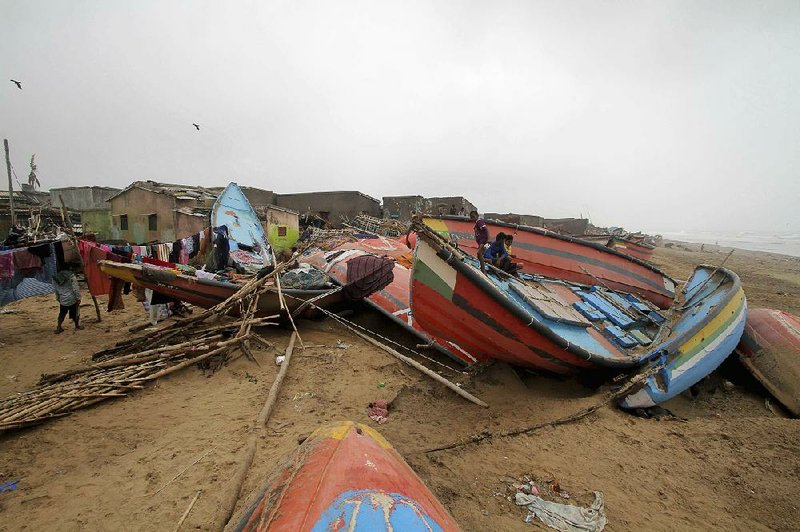DHAKA, Bangladesh -- An evacuation plan that whisked more than 1 million people to safety appears to have spared India a devastating death toll from one of the biggest storms in decades, officials said Saturday.
Fifteen people were reported killed in Cyclone Fani, a storm that drew comparisons to a "super" cyclone that hit 20 years earlier in the same area and killed about 10,000 people.
Cyclone Fani packed winds of 155 mph when it made landfall Friday in eastern Odisha state, equivalent in strength to a Category 4 hurricane, said Mohammad Heidarzadei, an expert on cyclones at Brunel University of London.
India has been perfecting its evacuation plan since 1999's "super" cyclone devastated large parts of Odisha. Though many poor people lost everything they owned, there was a widespread feeling that this could have been so much deadlier.
"It seems the worst is over," said Bishnupada Sethi, the state's special relief commissioner.
As of late Saturday, India's National Disaster Response Force director S.N. Pradhan said three people had been killed in that country, though the storm smashed thatched-roof huts, uprooted trees and power lines, ripped the roof off a medical college and sprayed the emptied coastline with debris.
"The precautions that have been taken should be continued," Pradhan said.
According to the Press Trust of India news agency, one victim was a teenager killed by a falling tree in the district of Puri, a popular tourist area in Odisha. A woman was killed while fetching water when she was struck by flying debris loosened from a concrete structure.
Another woman, age 65, died apparently of a heart attack at a cyclone shelter, the news agency reported.
Fani crossed over India's West Bengal state and moved northeast Saturday toward Bangladesh, weakening from a severe cyclonic storm to a cyclonic storm. But Bangladesh also had prepared for the storm and also evacuated 1 million people.
A dozen people had been confirmed killed in Bangladesh as the cyclone hovered over the country's southwestern coast early Saturday, delivering battering rainstorms. Lightning killed at least six of them, newspapers and television stations reported.
Shah Kamal, the disaster management secretary for Bangladesh, also warned that the death toll there could rise, though he was optimistic it would not.
"I have a feeling that Allah favored us this time," he said.
Bad weather from the storm system was projected to affect around 100 million people in South Asia, from India's distant Andaman Islands to Mount Everest in Nepal.
"In the event of such a major calamity like this -- where Odisha was hit by close to a super-cyclone -- instead of being a tragedy of humongous proportion, we are in the process of restoring critical infrastructure. That is the transformation that Odisha has had," the state's top government official, Naveen Patnaik, said in a statement.
India's disaster-response agency said authorities were working "on war footing" to restore power and communications, and clear roads of debris.
Widespread blackouts, damaged water supplies and roads blocked by fallen trees and power lines made travel around the affected area difficult, officials said.
Pravat Ranjan Mohapatra, the deputy relief commissioner at Odisha's emergency center, said his phone line and Internet were down for most of Saturday.
"Earlier we were not able to connect with authorities for infrastructure damage, how many houses are damaged or how many people have died or were injured," he said.
But when infrastructure was working, residents said, it was used effectively. Indian officials transmitted millions of text messages, broadcast warnings over public address systems and sent fleets of buses to scoop up vulnerable people, taking them to hundreds of cyclone shelters that had been stocked with water and food.
Many people remained in the shelters Saturday, fearful of floods and other hazards like downed electrical wires, and wary of reports that some villages were swamped.
"They are welcome to stay as long as they want," said Satyajit Mohanty, a police official in Bhubaneswar, an inland city.
Information for this article was contributed by Julhas Alam and Chonchui Ngashangva of The Associated Press; and by Hari Kumar, Jeffrey Gettleman and Sameer Yasir of The New York Times.
A Section on 05/05/2019
